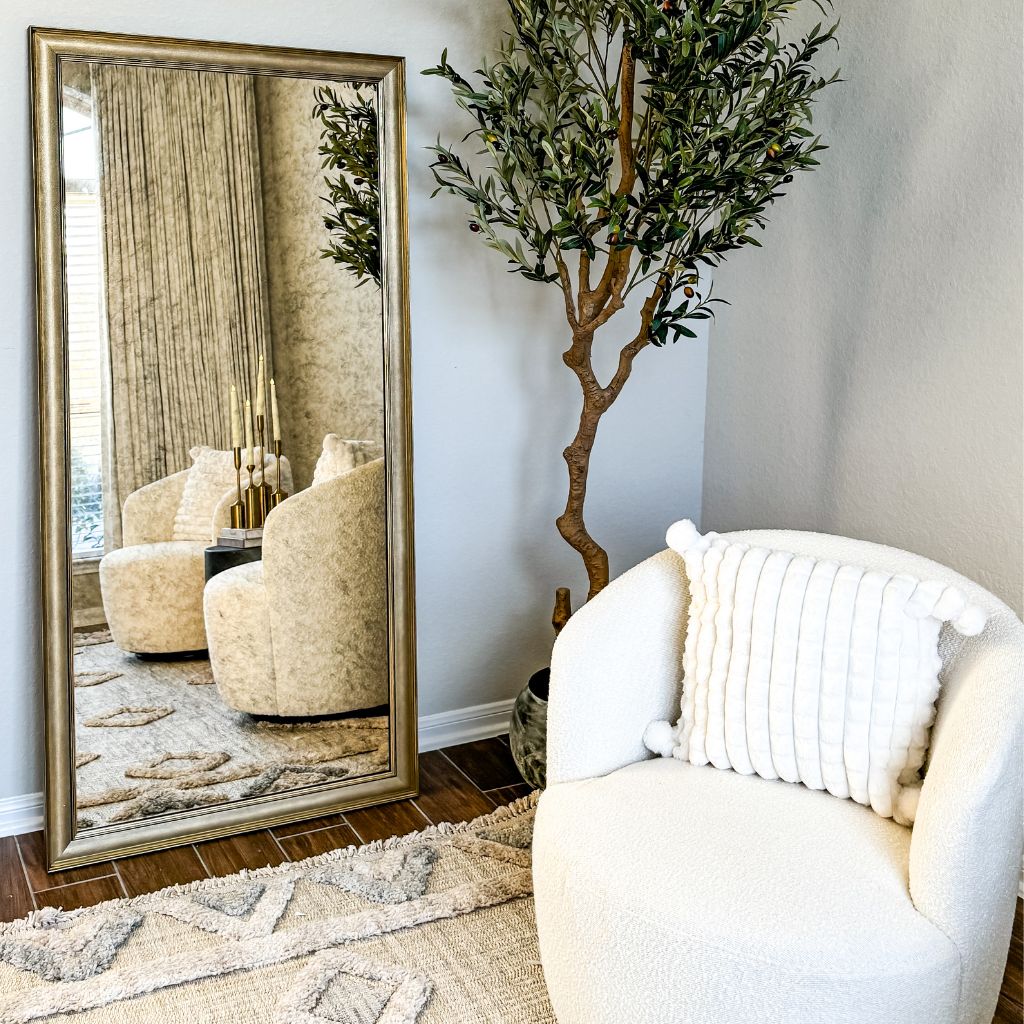In life and in design, predictability can be boring. Playing it safe with your interior design and decor is fine, but why not let your unique style shine? With a little imagination and a few guideposts, you can effectively mix textures and patterns to elevate your space and give it a professional look packed with personality.
When it comes to incorporating a variety of textures and patterns, where’s the line? How many new elements can you introduce without overwhelming the room? We’re diving into best practices below.
A Touch of Texture
One key element that sets interior designers apart from the average homeowner is their willingness to play with different textures. Using a range of texture can make any room feel more luxe, as it adds depth and dimension to a room.
This is an especially smart tip if you are working within a small space or are unable to paint or use wallpaper (looking at you, renters!). By adding in layers of plush, sleek, velvety, and organic, you can create a cozy, lived-in look on any scale.
EXAMPLE: Pair your velvet sofa with a sleek glass coffee table, all atop a rustic, earthy jute or seagrass rug layered with a smaller faux fur rug.

Choose a Wallpaper that Wows
Wallpaper is a tried-and-true method for adding dimension and color to a space, and the sky’s the limit on designs. Add texture with a grasscloth option, go bold with a modern geometric pattern, or opt for something silky and intricate. It will completely transform your space, but it is more of a time commitment (and investment) compared to the other suggestions in this post. In the case of wallpaper though, the reward is worth it.
If you’re not ready to paper an entire wall, use it to highlight architectural details like arches, bookshelf walls, or alcoves. Are you a renter? No problem! There are so many removable and peel-and-stick options available now, that you can get in on the wallpaper fun without kissing your security deposit goodbye.

Go for A Gallery Wall
On a small scale, a gallery wall can add instant interest to a room—and without the commitment of wallpaper. This is a relatively easy way to mix various textures, styles, and patterns. Best of all, it’s doable for renters, and is simple enough for even beginner DIYers to accomplish!
Pro tip: A gallery wall is a great place to mix “high and low” pieces. For example, use a mix of picture frames sourced from antique shops with newer, more contemporary ones. Vary the frames themselves—wood, metal, acrylic, etc.—and/or incorporate artwork with different textures and media. We love including a framed mirror in a gallery wall. It’s the perfect way to add a little light and airiness to any space, even dark hallways or staircases.

Balancing Fabric for Maximum Impact
When it comes to mixing fabrics, the goal is to strike the balance between cohesion and contrast. Generally speaking, you want to stick to a general color palette—that way there is a thread of consistency throughout the room—and then get creative with mixing up the patterns.
EXAMPLE: If your couch is a muted beige, perhaps your sitting chairs have a bold pattern, with a bit of that neutral color woven in throughout. Then, layer throw pillows on both pieces in a different pattern, but with a pop of a coordinating accent color. When the color scheme is harmonious, the exact pattern you choose matters less. Don’t be afraid to try “wrong” patterns that you don’t think will work.

Ultimately, your home style is unique to YOU. There are no precise rules when it comes to mixing and matching patterns or textures, and the best way to find out what works is to try. Our advice? Go bold. You’d be surprised how a space can come to life when you stop being afraid of design “rules.” Good luck!






